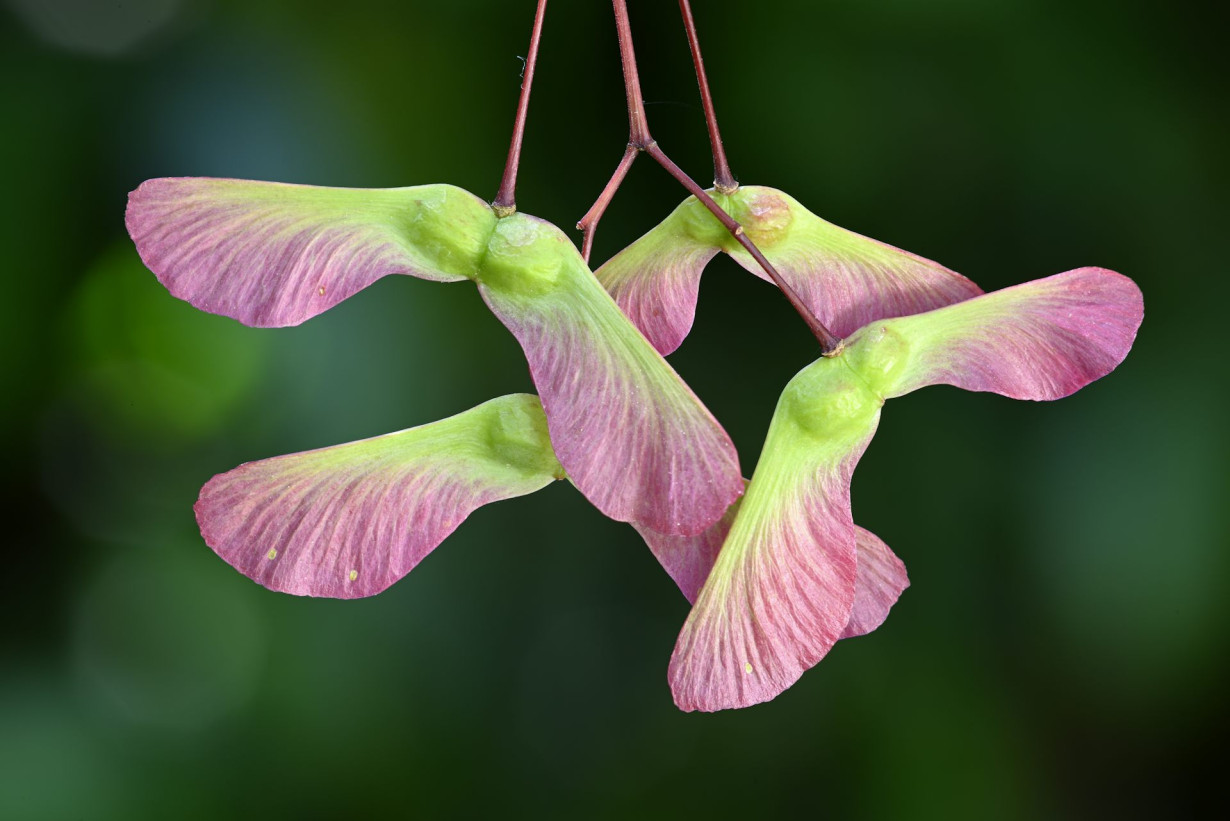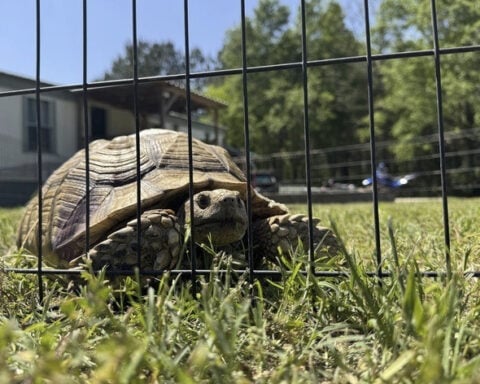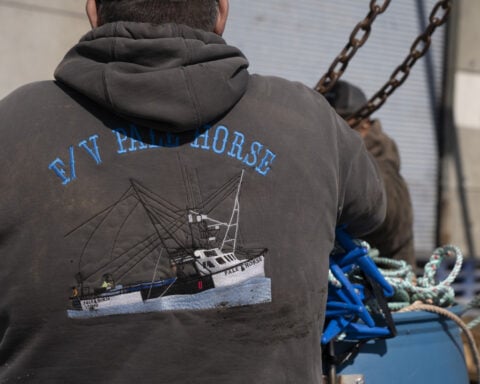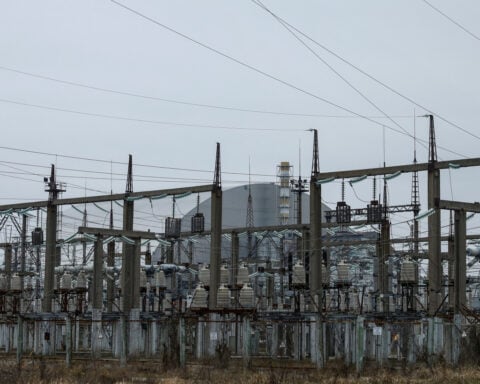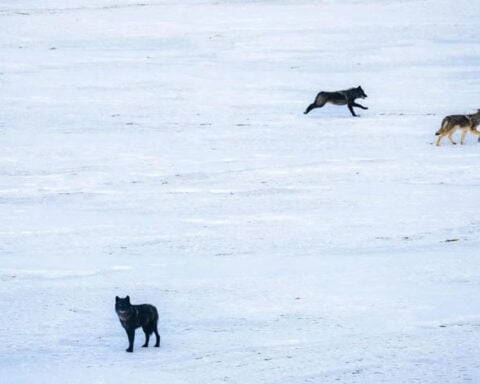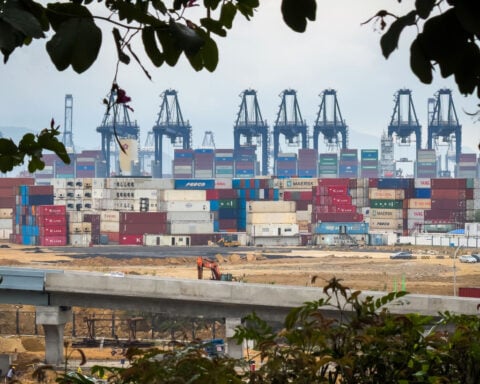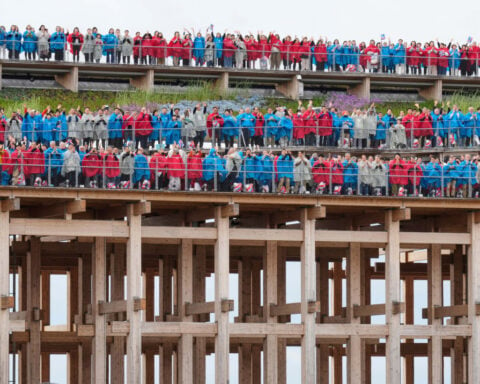When wind or other disturbances detach winged maple seeds called samaras from their parent tree, they spin through the air – and can even spin when it’s raining. Impacts by high-speed raindrops only briefly interrupt the seed’s spinning because the seed can shed the drop rapidly and restart its spinning in less time than it takes to blink.
If you live somewhere with maple trees, you’ve probably seen their striking helicopter seeds – made up of a seed pod attached to a delicate wing. Maple samaras’ unique design and spinning movement can teach physicists like me about seed dispersal patterns and even engineering new types of flying vehicles.
The samaras’ spinning movement, called autorotation, keeps them in the air for longer so they travel farther.
The spinning flight of a maple samara.
In a February 2025 study, my colleagues and I filmed raindrops as they crashed into autorotating samaras. The samaras shed drops by shattering them, flinging the drops off, or rolling out of the way – like they’re turning away from a punch. If a drop falls in just the right place, the spinning seed can cut it in half.
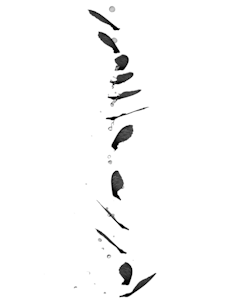
The movement of a samara as it spins through the air. Our new study captured this pattern using a high-speed camera.
Breanna Shaeffer and Andrew Dickerson, University of Tennessee-Knoxville
In order to keep flying, the samaras must shed the entire drop. Samaras shed drops fastest when the drops hit the heavier, round nutlet part of the seed, rather than the wing. Shedding is made easier by the samaras’ mildly water-repellent surface. We estimated that raindrop collisions reduce a samara’s time in flight and the distance it travels while spinning, but by less than 10%.
Why it matters
Maples are an important species to the Eastern United States. They provide syrup and timber, making them economically and commercially significant.
To proliferate in a rapidly changing climate, maples and other samara-bearing species need to disperse their seeds as far as possible.
My team’s results provide context for other studies focused on how wind transports rotating and nonrotating seeds alike. Some seeds can even travel hundreds of miles.
From an engineering perspective, the insights gained from our study could inform the design of new types of aerial vehicles that use autorotation to ride the wind without a motor. Mimicking the shapes of these seeds could help such vehicles quickly recover from disruptions to flight.
Samaras are also visually intriguing. Discovering more about how small, beautiful parts of nature thrive could help scientists get people interested in the environment.
What still isn’t known
Maple samaras represent just one way that seeds use the wind to disperse farther. A dandelion’s parachute-like float relies on the seed’s light weight and high drag. A hop tree seed uses a single, wafer-shaped seed to flutter, while triplaris seeds have three wings that achieve a helicopter-like spin. Researchers still aren’t sure how raindrops can affect the flight of these seeds.
What’s next
Next, my colleagues and I hope to unravel the flight mechanics of the “rolling samaras” found on tulip poplar and ash trees. These seeds rotate like maple samaras, but the wing also rolls around the axis that runs across its wingspan as it does so.
Not only do we plan to compare their flight performance against the more recognizable maple samara, but we will also study how these seeds respond to perturbations such as wing damage and crosswinds.
How I do my work
I like to uncover the complexity in seemingly simple systems. So many of the brief, small and common interactions in our world are wonderfully beautiful. I seek to tell those stories through a camera lens and with mathematical flair.
The Research Brief is a short take about interesting academic work.

Andrew Dickerson receives funding from the National Science Foundation.
Source: The Conversation

 Trump has begun another trade war. Here's a timeline of how we got here
Trump has begun another trade war. Here's a timeline of how we got here
 Canada's leader laments lost friendship with US in town that sheltered stranded Americans after 9/11
Canada's leader laments lost friendship with US in town that sheltered stranded Americans after 9/11
 Chinese EV giant BYD's fourth-quarter profit leaps 73%
Chinese EV giant BYD's fourth-quarter profit leaps 73%
 You're an American in another land? Prepare to talk about the why and how of Trump 2.0
You're an American in another land? Prepare to talk about the why and how of Trump 2.0
 Chalk talk: Star power, top teams and No. 5 seeds headline the women's March Madness Sweet 16
Chalk talk: Star power, top teams and No. 5 seeds headline the women's March Madness Sweet 16
 Purdue returns to Sweet 16 with 76-62 win over McNeese in March Madness
Purdue returns to Sweet 16 with 76-62 win over McNeese in March Madness
